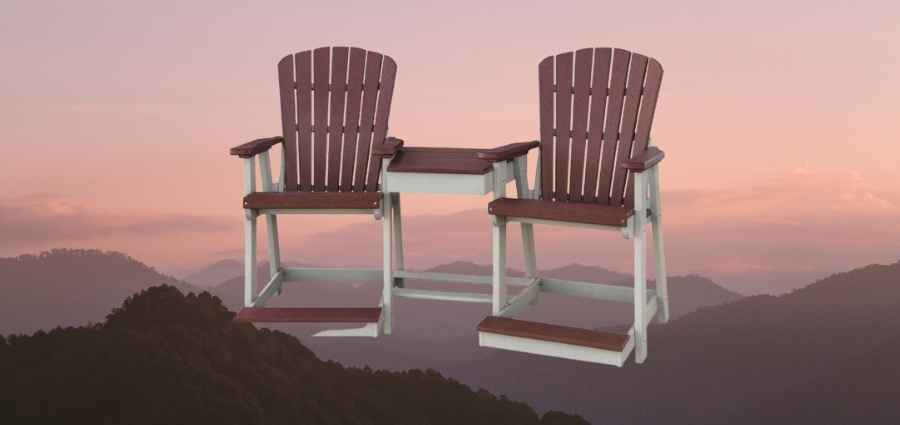Is Polywood Durable? Wood vs Polywood
Polywood is a type of lumber that is generally used to make outdoor furniture, as well as other types of items. Many people wonder whether Polywood is durable and whether or not they should purchase it for their homes.
This article will discuss whether Polywood is durable so keep reading to know more.
Polywood is a highly durable material made from HDPE. It can withstand rain, heat, snow, and damage from saltwater. If properly cared for, Polywood has a life expectancy of 20-30 years with little to no maintenance.
Table of Contents
How Durable Is Polywood?
Traditional hardwood is used for thousands of years as far as civilization remembers. However, with Polywood furniture, the durability of wood is nothing. It is extremely durable and you won’t be experiencing the inherent problems accompanied by using natural wood such as rotting, insect infestation, and weathering for example.
Polywood has a cross-grained structure giving it additional strength and durability. It means that when you buy a Polywood product, it only needs a little bit of care and cleaning from time to time.
How Long Does Polywood Last?
The short answer is 20-30 Years.
Despite of it’s “wood-like” appearance, Polywood does not contain any type of wood or natural fibers. In fact, it is actually made from high-density polyethylene plastic (HDPE) which makes it highly durable, replicating the strength of high quality tropical lumbers.
It lasts longer than hardwoods like mahogany and teak, as it can last for a lifetime with proper care and without the need for a lot of maintenance other than simply washing it with water.
Although, Polywood is not the cheapest option. But because of its quality, in the long run, it can save you a lot of money because you don’t have to spend too much on maintenance and replacement.
Can I Put My POLYWOOD Outside All-Year-Round?
Since Polywood is built to withstand the changes in weather and climate, you can put it outside all-year-round even without covering it with a cloth or tarp. Whether it is a hot sunny day, snowy winter, rainy day, heavy winds, and saltwater, Polywood will stay impervious.
It contains a UV-inhibiting pigment system so that the color won’t fade easily when left under the sun for a long period of time – no resealing or repainting needed. On the other hand, its HDPE component prevents moisture in cold weather.
However, putting a cover on Polywood furniture protects it from dirt or dust, making it easier for you to clean it with less effort to make it look like new.
Also, different furniture/items may develop molds, mildew, and bacteria after some time when left outside. But Polywood is resistant to all of these and what you only need to do is to simply wash it periodically if you don’t want to store it inside when not in use.
Is Polywood Better Than Wood?
For centuries, natural woods from trees have been used in creating furniture and other types of items. In terms of authenticity, wood will definitely be a better choice. However, when it comes to all other factors like durability, resistance, maintenance, value, and environmental aspects, Polywood is much a better option.
Unlike real wood, Polywood does not splinter and rot since it is made out of plastic. Because of this, it can easily be mold so that manufacturers could transform them into a wide variety of furniture. It is also less prone to scratches and does not absorb water as a normal wood does.
This means that it stays moisture-free without applying water sealants and stains. You also don’t have to worry about the colors you want and type of finishing as it already comes in a wide range of colors and finishes.
In addition, certain issues such as weathering, insect infestation, mold, drying out that can mostly be encountered in woods are not a problem in Polywood even with minimal maintenance. This can save you a lot of effort, time, and money. Compared to natural wood, the amount of waste in Polywood is lower since it is made of HDPE with infinite recyclability.
Moreover, Polywood does not need any preservatives and chemicals that are being used in natural woods. These wood preservatives can pose harm to the environment and are toxic to several plants, animals, as well as humans. This makes it an outstanding option if you have toddlers, kids, and pets at your home.
Lastly, it lessens the demand for cutting trees to produce real wood furniture that increases the vulnerability of tropical rainforests. It is more eco-friendly since it helps nature to resolve one of the biggest environmental problems by reducing the number of recyclable plastics in oceans and rainforests.
Conclusion
In conclusion, Polywood is a much better option than wood because it is made from a material that is more durable, more eco-friendly, and offers more in terms of safety in use.
Your life and the environment will be much better if you spend your money on Polywood instead of buying real wood furniture.
However, when it comes to beauty and appeal, there is nothing that can match real and natural wood.




